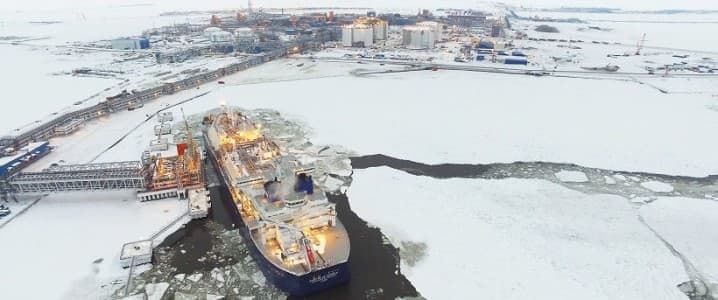Russia’s Arctic LNG 2 project lifted production to record levels in late August as summer ice conditions opened the Northern Sea Route, allowing additional cargoes to reach Asia, according to Bloomberg data reported by LiveMint. Output topped 25 million cubic meters on August 25-26, averaging nearly 15 million cubic meters for much of the month. The figures mark the strongest operational run since the facility began trial shipments earlier this year.
The Novatek-led facility, located on the Gydan Peninsula, has faced U.S. and EU sanctions that block Western financing, shipping insurance, and liquefaction technology. Despite these restrictions, Train-1 has ramped up throughput and dispatched multiple cargoes on specialized Arc7 ice-class carriers. Reuters tracking data earlier this month showed the Christophe de Margerie and other sanctioned vessels continuing liftings, demonstrating Russia’s reliance on its limited fleet of Arctic-class tankers.
Arctic LNG 2 is designed for three trains of 6.6 million tons per year each for a total planned capacity of 19.8 million tons annually. Sanctions on Russian shipyards and technology suppliers have delayed deliveries of additional carriers, creating a shortage that caps export flexibility. Analysts note that ship-to-ship transfers near Murmansk are being used to free Arc7 capacity for Arctic liftings.
The logistics challenge has forced Novatek to expand marketing outreach to Asia. Recent efforts to place cargoes in China and India suggest a pivot away from Europe. Russian officials promote the Northern Sea Route as a strategic corridor capable of cutting sailing times to the Pacific during ice-free months, reinforcing Moscow’s broader LNG export strategy.
August’s higher run rate followed earlier commissioning stages when limited tanker capacity and storage constraints forced temporary cutbacks, with shipments now moving more regularly on Arc7 carriers.
By Charles Kennedy for Oilprice.com
More Top Reads From Oilprice.com

